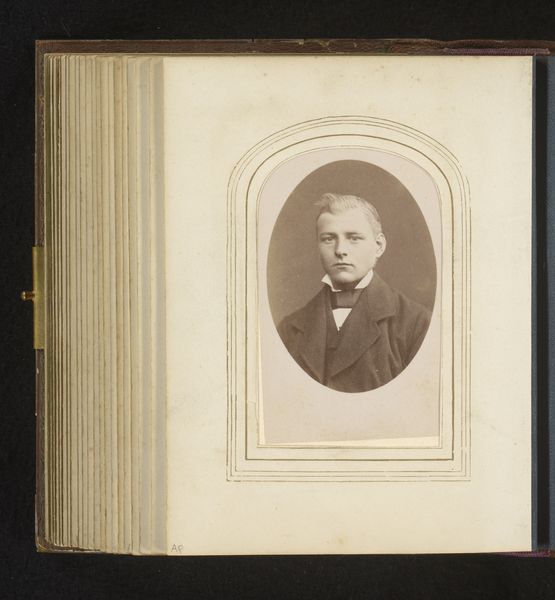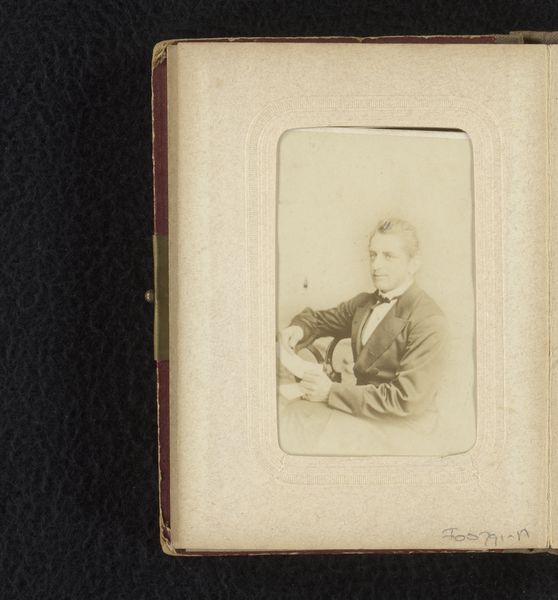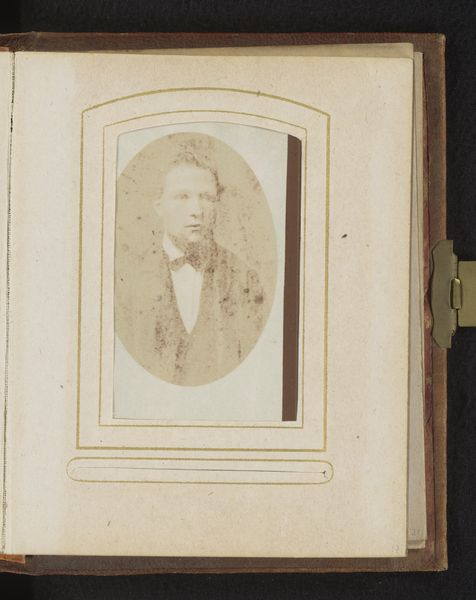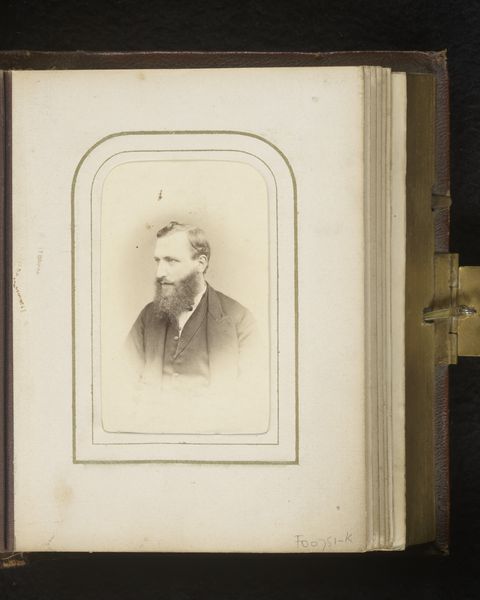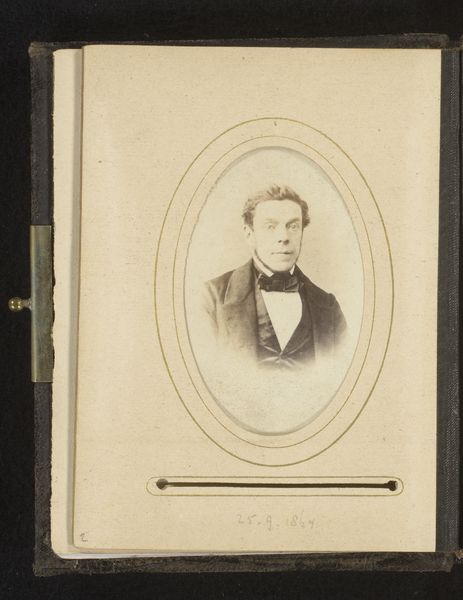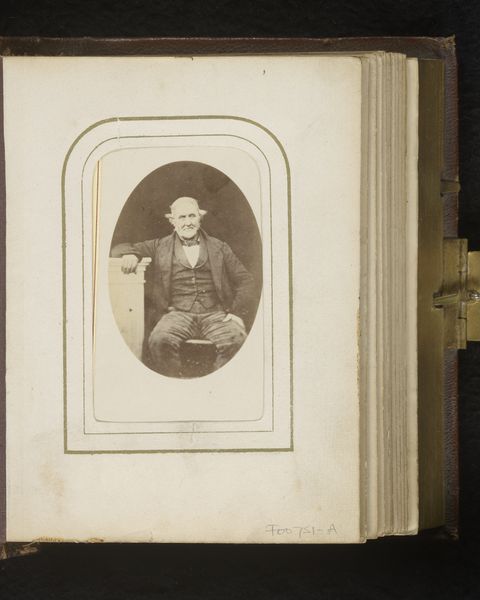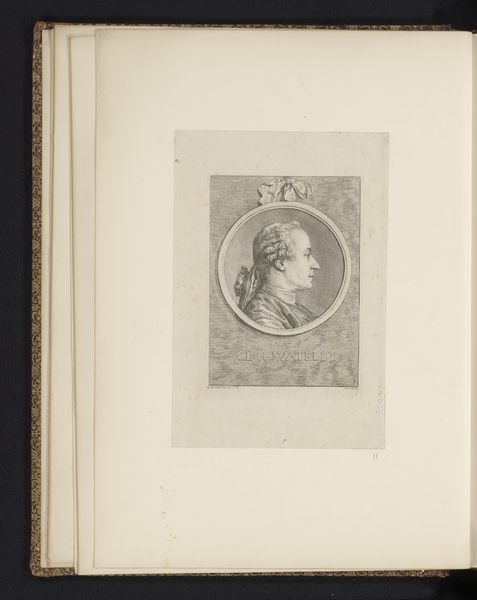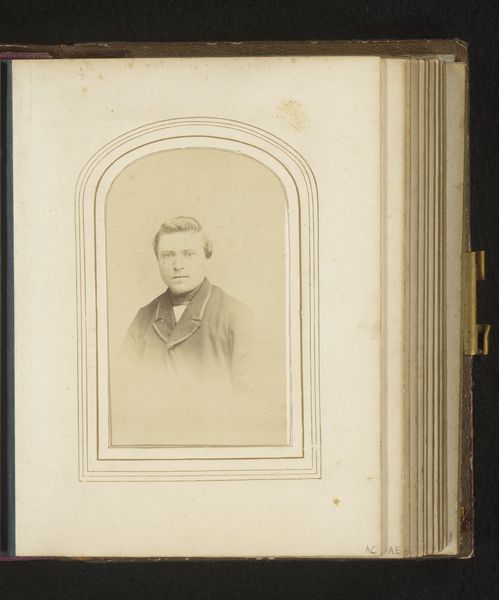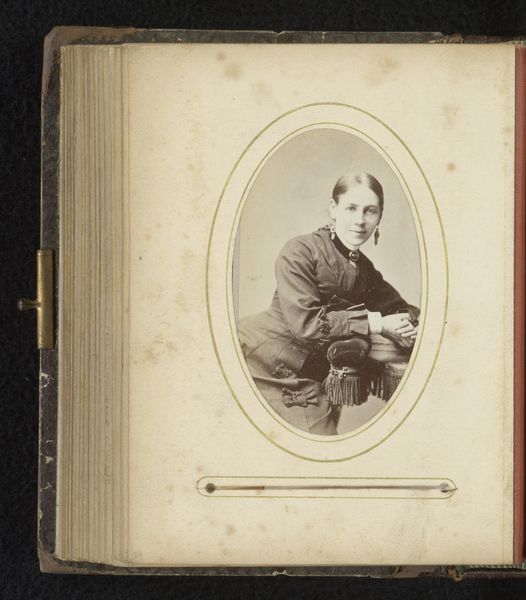
photography, albumen-print
#
portrait
#
aged paper
#
toned paper
#
muted colour palette
#
photography
#
albumen-print
Dimensions: height 103 mm, width 63 mm
Copyright: Rijks Museum: Open Domain
Curator: The photograph "Portret van een meisje," dating from sometime between 1860 and 1880, attributed to Elliott & Fry, is mounted as an albumen print on toned paper. The tones create a somewhat melancholic atmosphere around the girl’s portrait. Editor: It's the subtlety of the pose and that contained sadness which grips me. There’s a quiet dignity there that’s remarkable, isn't it? Almost like she is posing for a future generation that is studying the visual markers and mores of an age she’s only dimly aware of. Curator: Indeed. The cultural weight imbued into a young girl at that time could be immense; domestic expectations coupled with limited educational access confined women to certain social scripts. Does her attire hint at any particular background, socio-economically? Editor: The simple adornments around her neck suggest, if anything, an attempt to imitate the fashions of a higher status—what that flower arrangement lacks in execution, it makes up for in intent. The middle class, striving for representation. What symbols might reflect on the deeper meaning of her place? Curator: Look closely at the slightly blurred texture and muted colours of the albumen print. Those details hint to a transience and ethereal essence. Consider her gaze – slightly averted. She is the vessel, both universal and extremely intimate, and the image asks viewers to accept a vulnerable perspective. Editor: So much conveyed by suggestion, a world built on nuance. How was photography shaping, reinforcing or challenging ideas of beauty, and status? And consider its public availability. I suppose the studio served as an egalitarian leveler as well as another potential method for propagating inequality. Curator: Exactly! And how might we consider studio portraits as performances, constructed not just by the subject, but by the social theater they inhabited? The photographic image solidified these posed selves. It served as propaganda that spread social expectations and moral rectitude. Editor: Thank you, indeed. That's provided much food for thought as regards how we examine history. Curator: A mutual reward, I trust.
Comments
No comments
Be the first to comment and join the conversation on the ultimate creative platform.
